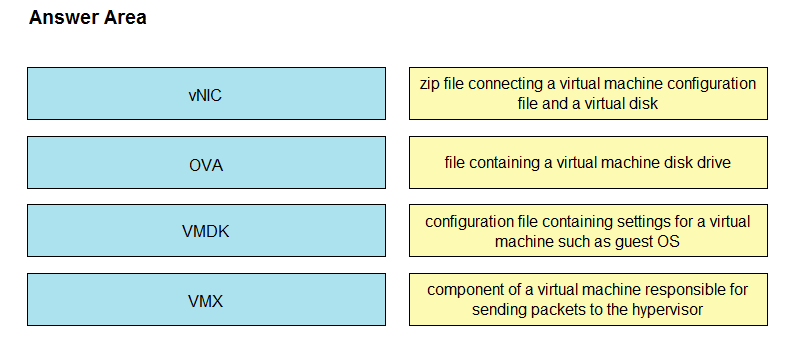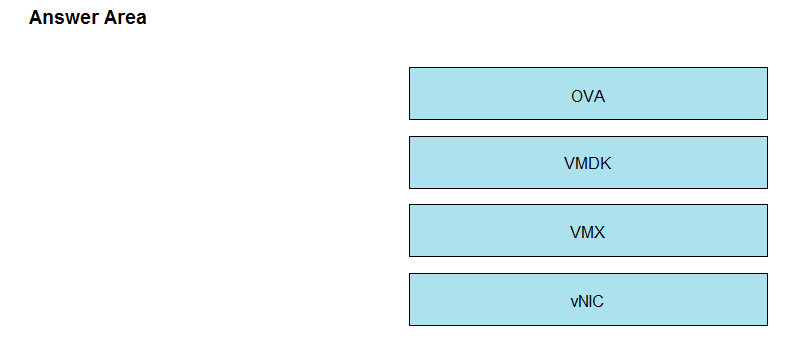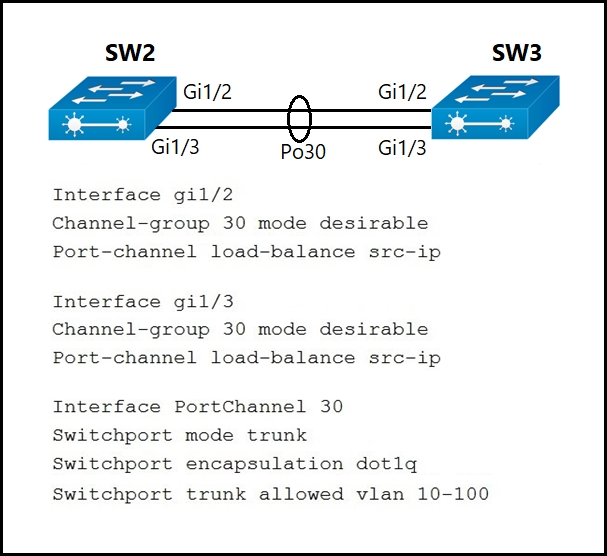DRAG DROP -
Drag and drop the virtual components from the left onto their descriptions on the right.
Select and Place:

Which element enables communication between guest VMs within a virtualized environment?
C
Each VM is provided with a virtual NIC (vNIC) that is connected to the virtual switch. Multiple vNICs can connect to a single vSwitch, allowing VMs on a physical host to communicate with one another at layer 2 without having to go out to a physical switch.
Which two methods are used to reduce the AP coverage area? (Choose two.)
BD
Which antenna type should be used for a site-to-site wireless connection?
D
In a wireless network environment, what is calculated using the numerical values of the transmitter power level, cable loss, and antenna gain?
C
Reference:
https://www.cisco.com/c/en/us/support/docs/wireless-mobility/wireless-lan-wlan/23231-powervalues-23231.html
What does the LAP send when multiple WLCs respond to the CISCO-CAPWAP-CONTROLLER.localdomain hostname during the CAPWAP discovery and join process?
D
Refer to the exhibit.
A port channel is configured between SW2 and SW3. SW2 is not running a Cisco operating system. When all physical connections are made, the port channel does not establish.
Based on the configuration excerpt of SW3, what is the cause of the problem?
B
What is a fact about Cisco EAP-FAST?
C
Reference:
https://www.cisco.com/c/en/us/support/docs/wireless/4400-series-wireless-lan-controllers/99791-eapfast-wlc-rad-config.html
Which DNS lookup does an access point perform when attempting CAPWAP discovery?
C
Reference:
http://www.revolutionwifi.net/revolutionwifi/2010/11/capwap-controller-discovery-process_23.html
Refer to the exhibit.
What are two effects of this configuration? (Choose two.)
CD